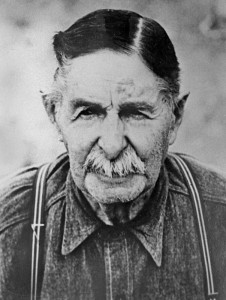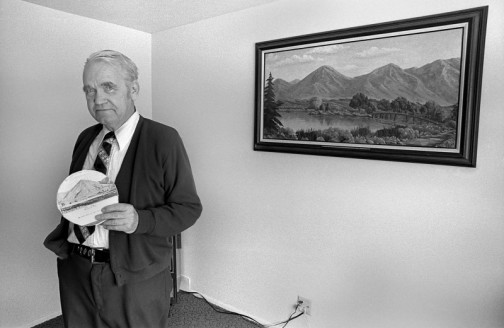Count me among those who will watching the skies on the evening of September 28. According to Latter-day Saint Julie Rowe, the end of the world as we know it will commence with a total lunar eclipse, also known as a blood moon. The astrological occurrence will be a harbinger of bad things to come, including earthquakes and a stock market crash, followed by a devastating recession and “days of tribulation.”
Turns out Sister Rowe isn’t the first Mormon ever to have an apocalyptic vision. Way back in 1894 a Utah Valley farmer by the name of John Koyle had a dream in which he was visited by “a strange personage from another world, attired in white and radiating intelligence.” The radiant personage escorted him a hillside at the south end of the valley, where, at a certain place they entered without resistance. Following a cream-colored leader vein, they arrived at a hard capstone, beneath which lay a large body of rich, white quartz containing leaf gold. From there, the ore body became even richer, eventually opening upon nine large caverns chock full of refined gold and ancient implements—remnants of a pre-Columbian mining operation. Think Golden Plates, except on a much grander scale.
Come the dawn, Koyle decided give up farming and take up mining. In order to finance the venture, he issued stock in what is commonly referred to as the Dream Mine. However, the stock certificates identify the operation as the Relief Mine. Why? Because during the coming “days of tribulation” U.S. currency will become worthless. Only currency backed by the vast gold reserves of the Dream Mine will be legal tender.
Julie Rowe’s vision of things to come involves “cities of light” where people will live in white tents in the mountains. John Koyle envisioned a “White City” on the mountain where the righteous would shelter while the earth was being cleansed of wickedness. Refugees from both the east and west coasts would converge on Utah Valley, which will become the new capital of the United States.
“Because, by the time this big stock market crash comes, the government would be out of business within ninety days, so there wouldn’t be any federal government to collect any taxes. And the principal reason why we here in Utah would continue with our economy and be a place of refuge is that we would have an honest money to deal with, whereas the rest of the nation would go down the drain with a worthless paper dollar, and the government would go with it.”
The words are those of the late Norman Pierce, stockholder and longtime Dream Mine archivist. I interviewed Mr. Pierce in his home forty years ago, and wouldn’t you know it? The end of days was imminent even then! He spoke of many of John Koyle’s predictions that had come to pass and of others yet to come. For instance, there was a recurring dream in which an elephant falls to its knees, then keels over—but is righted by a leader “mighty and strong” and most likely white. Or was the elephant white? I don’t rightly remember. What I do remember is the prototype coin he showed me. On one side was the mountain of gold, on the other a portrait of John Koyle.
Norman Pierce’s obsession with the Dream Mine had cost him his marriage, church membership and home in Salt Lake City. When we last spoke, he was hunkered down in Spanish Fork, within shouting distance of the Dream Mine, and optimistically looking forward to the arrival of a giant fireball from outer space.
“These new cities that we build will be built fireproof, but even so, on that particular day the faithful will be warned to take cover in the caves and tunnels and mines, where they’d have enough insulation to keep from burning up or roasting in an oven. The number of people that will be destroyed here, at least in Utah, would be about ninety percent. That’s ninety percent tares and ten percent wheat. Now, if the ratio of that ten percent is seven women to one man, that means that there’s only about one man out of a hundred that’s going to make the grade. So, naturally, this is the place I would take to, because I want to be where the action is going to be. And this is a nice location and I think one of the safest communities in the whole world.”


